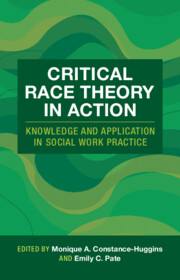Book contents
- Critical Race Theory in Action
- Critical Race Theory in Action
- Copyright page
- Contents
- About the Editors
- Contributors
- Acknowledgments
- Part I Introduction
- Part II Case Studies in Micro-Level Practice
- Part III Case Studies in Mezzo-Level Practice
- Part IV Case Studies in Macro-Level Practice
- Case 4.1 What’s in It for Us?
- Case 4.2 Hoʻokuaʻāina
- Case 4.3 Advancing the Voices of Those Who Are Marginalized
- Case 4.4 The Great Divide
- Case 4.5 You Can’t Budget Your Way Out of Racism
- Index
- References
Case 4.2 - Hoʻokuaʻāina
Reclaiming Land, Culture, and Indigenous Voice to Advance Well-Being
from Part IV - Case Studies in Macro-Level Practice
Published online by Cambridge University Press: 25 October 2025
- Critical Race Theory in Action
- Critical Race Theory in Action
- Copyright page
- Contents
- About the Editors
- Contributors
- Acknowledgments
- Part I Introduction
- Part II Case Studies in Micro-Level Practice
- Part III Case Studies in Mezzo-Level Practice
- Part IV Case Studies in Macro-Level Practice
- Case 4.1 What’s in It for Us?
- Case 4.2 Hoʻokuaʻāina
- Case 4.3 Advancing the Voices of Those Who Are Marginalized
- Case 4.4 The Great Divide
- Case 4.5 You Can’t Budget Your Way Out of Racism
- Index
- References
Summary
The case discusses the CRT tenet of advancing the voices of the marginalized. It addresses how the dominant narratives in community development practice suggest that Indigenous communities have high rates of social problems, but few strengths. This deficit-based lens ignores the perspectives of people of color and does not acknowledge their assets, resources, and cultural wealth. By centering the voice of Indigenous individuals, in this case, Native Hawaiians, āina-based (land-based) community building provides an innovative and powerful approach to strengths-based practice. Culture-centered interventions and counter storytelling are crucial in advancing the voices of the marginalized and implementing meaningful and effective interventions for Indigenous communities and organizations.
Keywords
Information
- Type
- Chapter
- Information
- Critical Race Theory in ActionKnowledge and Application in Social Work Practice, pp. 135 - 149Publisher: Cambridge University PressPrint publication year: 2025
